How to Tell If a Diamond is Real – (2 Proven Ways That Work)
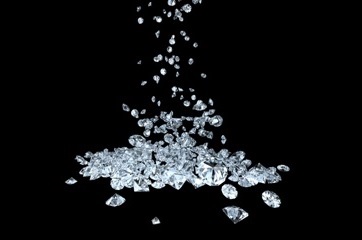
Fakes and simulants can look as good as the real deal.
So, how do you spot a fake diamond or a simulant? How do you even tell if a diamond is real? These are all questions that consumers ask all the time. But the thing that shocks me is the amount of misinformation being propagated by self-proclaimed “experts” and professionals in the industry.
One of the most idiotic methods I’ve come across is called the “scratch test”. In this test, the unknown gemstone is used to scratch a piece of glass and if it scratches the glass, then this concludes the gemstone is a diamond.
But the problem is, there are many other gemstones like CZ and Moissanite that can easily scratch glass. And even if the gemstone survives and passes the scratch test, you are still back to square one. It doesn’t prove that what you have is a diamond.
The stupidity doesn’t end there.
Another outlandish method I’ve frequently come across is the heat shatter (lighter) test where you are supposed to heat up the gemstone with a blow-torch or lighter. Thereafter, you are supposed to dunk the heated gemstone into cold water immediately to see if it shatters. If it doesn’t, it is a diamond.
Well, this diamond lighter test is destructive and outright dumb. Why? That’s because it is almost guaranteed to damage your jewelry and is high-risk. The point is, even if the gemstone doesn’t shatter due to thermal contraction, it doesn’t prove anything.
In this article, I’m going to set the record straight and debunk the widespread diamond tests that are ineffective. You will learn how to tell if a diamond is real or fake the right way; without using any expensive tools or performing any high-risk tests.
And if you’re thinking about buying a beautiful piece of jewelry that’s not just a diamond, consider exploring other unique options, like those offered by Celestial Crystals. Their stunning collection of crystals and crystal jewelry provides an alternative way to elevate your style with natural, one-of-a-kind pieces.
Plus, their commitment to quality ensures you’re getting something that’s both beautiful and meaningful, making it the perfect choice for anyone looking to add a little more sparkle to their jewelry collection without the high risks involved in questionable tests.
The Fog Test – (Doesn’t Work)
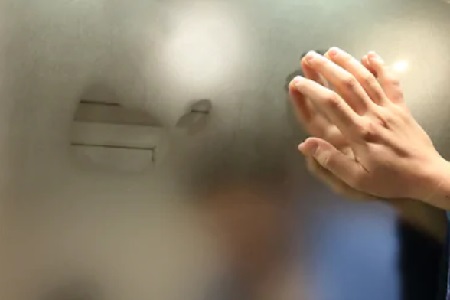
Diamonds possess extremely good thermal conductivity and heat dispersion properties compared to simulants like CZ and white sapphire. The fog test takes advantage of the diamond’s heat transfer capability and is simple to perform.
In theory, all you need to do is to place the gemstone in front of your mouth and fog the surface by breathing on it. It is said that only a real diamond will not be fogged by the heat from your breath – or at least the fog should disappear by the time you could actually notice the change. On the other hand, cubic zirconia stones will fog spectacularly and require some time to dissipate the heat exerted on them.
In practice, this is a completely unscientific test and is unreliable. Why?
This is because the diamond fog test is affected by too many random parameters! Depending on the humidity, environment, your breath and how near or far you hold the gemstone, a diamond can fog up when you blow on it. On top of that, moissanite also has superb heat conductivity and this test won’t help you differentiate that from a diamond.
The Black Light Test – (Doesn’t Work)
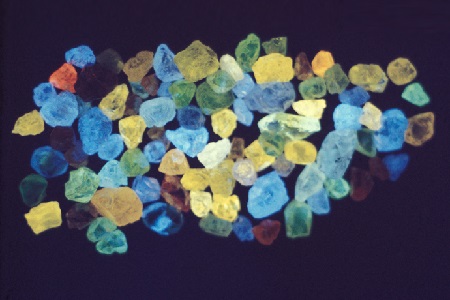
Black light is simply another term for ultraviolet light and the black light test involves checking the gemstone for fluorescence. Unlike most simulants, 30% of naturally mined diamonds exhibit some degree of blue fluorescence.
To perform this test, all you need is a UV light source and to shine it onto the gemstone. If it glows blue, the gemstone is said to be a diamond. Now, let me be absolutely clear about this. As a gemologist, I take issue when people claim the black light test to be gospel for identifying diamonds because it is highly inaccurate.
First of all, there are other gemstones that exhibit fluorescence. Secondly, the cheap UV light sources that a normal consumer would buy typically operate at different wavelengths. This is vastly different from a specific 365nm wavelength UV source that professional gemological lab use.
Thirdly, the absence of fluorescence doesn’t tell you that the gemstone is a fake or real diamond. 70% of naturally mined diamonds don’t have fluorescence and at the end of the day, this black light test leads you to nowhere.
Get Professional Help From Appraisers And Gemological Labs
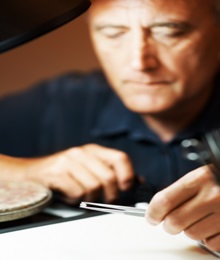
The best way to find out whether a diamond is real or fake is to seek professional help. You could bring the gemstone to an appraiser or a gemological lab and pay a fee to get it assessed. This is a guaranteed approach and it leaves out any second guessing.
And it even saves you the time and hassle of trying to figure it out by yourself. Typically, a professional assessment of the gemstone would take less than 30 minutes when performed by an appraiser.
If you are a consumer, the best form of assurance for a real diamond is to get an independent grading report from labs like AGS or GIA. A reliable grading document not only subjects the diamond to vigorous testing, it also provides a correct representation of the diamond’s qualities (4Cs).
DIY – How to Tell If a Diamond is Real or Fake at Home
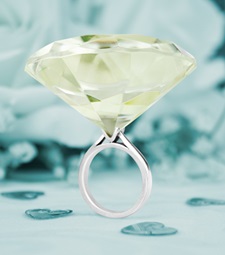
Insanely cheap deals – If it is too good to be true, it probably is.
If you are a DIY person and want to know how to tell if a diamond is real at home, you will need to buy a portable diamond tester (costs about $15) and a 10X jeweler’s loupe.
Let me quickly explain the science behind this method and why it is the easiest method anyone can use to check for a real diamond by process of elimination.
Based on the principle that diamonds are super-conductors of heat unlike other gemstones, the diamond tester is fitted with a copper heat probe to analyze the thermal conductivity of the unknown gemstone.
With the diamond tester, common simulants like CZ or strontium rutile can be quickly identified with extremely high accuracy. But there’s a modern day simulant called moissanite which has similar thermal properties as diamond and this can lead to false-positive results.
Because of this, you need to perform an additional step to confirm the gemstone’s identity. Using the 10x jeweler loupe (this link shows you how), you can easily identify moissanite from a real diamond based on an optical property called double refraction.
I’ve written an article here on identifying moissanite and you can see photographs and examples of what to look out for here.
The beauty of this 2-step process is that it works for both loose gemstones and mounted jewelry. It is the most accurate method that a layman can perform with little difficulty and only costs you a small amount of money to do so.
Summary – Let’s Wrap Things Up
The bottom line is, you should seek professional help if you want to be certain about an unknown gemstone you already have.
If you are thinking about buying a gemstone of unknown origins or found someone who is trying to sell you a “diamond” at unbelievable prices, please don’t fall for it. Deals like these never end well.
The point I am trying to make here is that you never want to be in a situation where you are doubting the authenticity of a purchase. This would save you all the headache of trying to identify the gemstone and avoid the stress of getting ripped off.
If you are shopping for an engagement ring, make sure you only buy a diamond that is graded by GIA or AGS. This is your assurance that the diamond is authentic and accurately graded for its qualities.

Related Articles
Leave A Comment

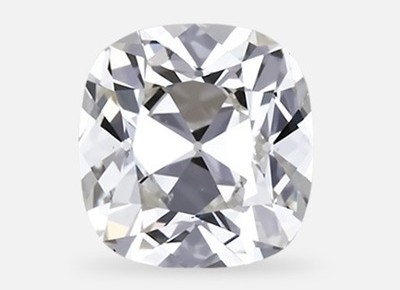
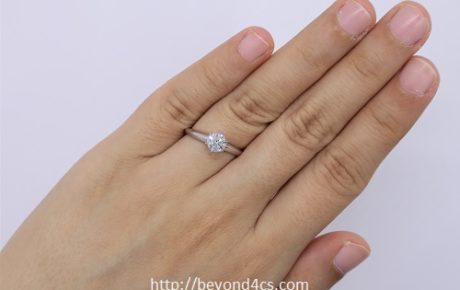
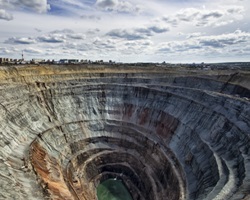
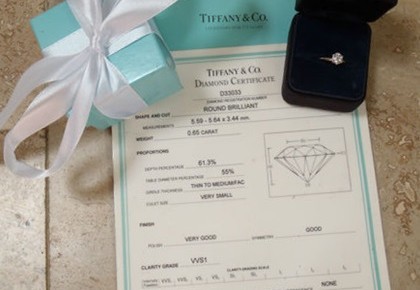









8 Comments
What about using jewelry markings or stamping on the setting? I was told that if the jewelers mark the ring using PT950 or PT or 14K and 18K, the gemstone in the ring would be a diamond. Unfortunately, I don’t have a tester or loupe. Can you tell if a diamond is real by eye or with a magnifying glass?
The metal stamps simply provide an easy form of identification for the setting material. There is absolutely no correlation between the setting material and the type of gemstone used. To be very clear, it is common place to see Moissanite and white sapphires being mounted in platinum and white gold settings.
The magnification power of a magnifying glass is too low to look at the facets properly. And even a trained person like me cannot tell whether a diamond is real simply by my eyes. You need tools to do that and the 2 pieces of equipment that I recommend are really cheap. If you want reliable answers, you’ve got to spend some money with the appraiser or buying the tools from Amazon.
I’ve read about a sparkle test that is used to identify fake diamonds. If you see colored flashlight and sparkle in a mirror then it is a real diamond. A fake diamond like cubic zirconia will have drastic differences.
Well, there is no truth in this. This is “fake news” and whichever source is propagating this has no idea what they are talking about. Poorly cut diamonds can have lousy sparkle and fire. A well cut CZ can have better fire and sparkle than a poor cut diamond.
So, if I showed you a gemstone with better sparkle, does that mean it must be a real diamond? Does it mean that the gemstone with lousy sparkle is a fake diamond?
NO!
To be safe, the process of identifying fake diamonds is best left to the experts. No matter how many amateur tests you perform on an unknown stone, there would still be a possibility of errors occurring and misjudged sentiments.
Using a diamond loupe to identify a diamond if it has inclusions. CZ is perfect and has no inclusions Are there any flaws or loopholes to this technique?
Yes. If the gemstone is an internally flawless diamond or one with VVS clarity, it is extremely hard for a layperson to find inclusions and you may wrongly assume it to be a CZ when it come have been a high grade diamond.
I picked up a stud with a clear gem along the sidewalk yesterday. Any tips on how to tell if a diamond earring is real? I don’t feel like paying money to get it assessed only for it to turn out to be worthless and to waste my time finding a jeweler.
If you want a cheap and instant way to confirm what you found, there isn’t any. And let me be very clear about this. If you want to know how to tell if a diamond earring is real, you need to get the basic tools I mentioned above or bring it to a professional for verification.